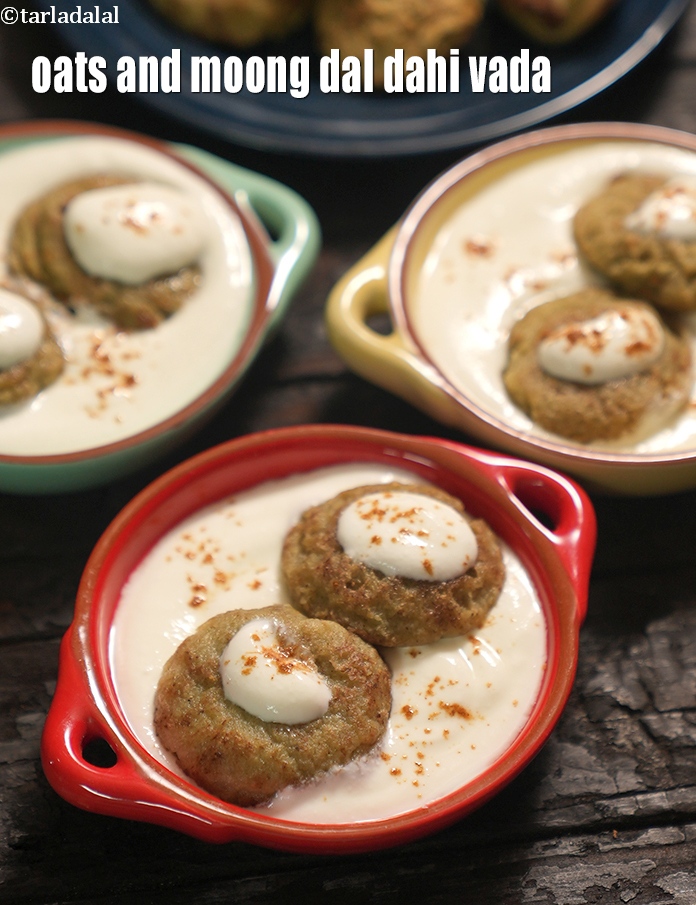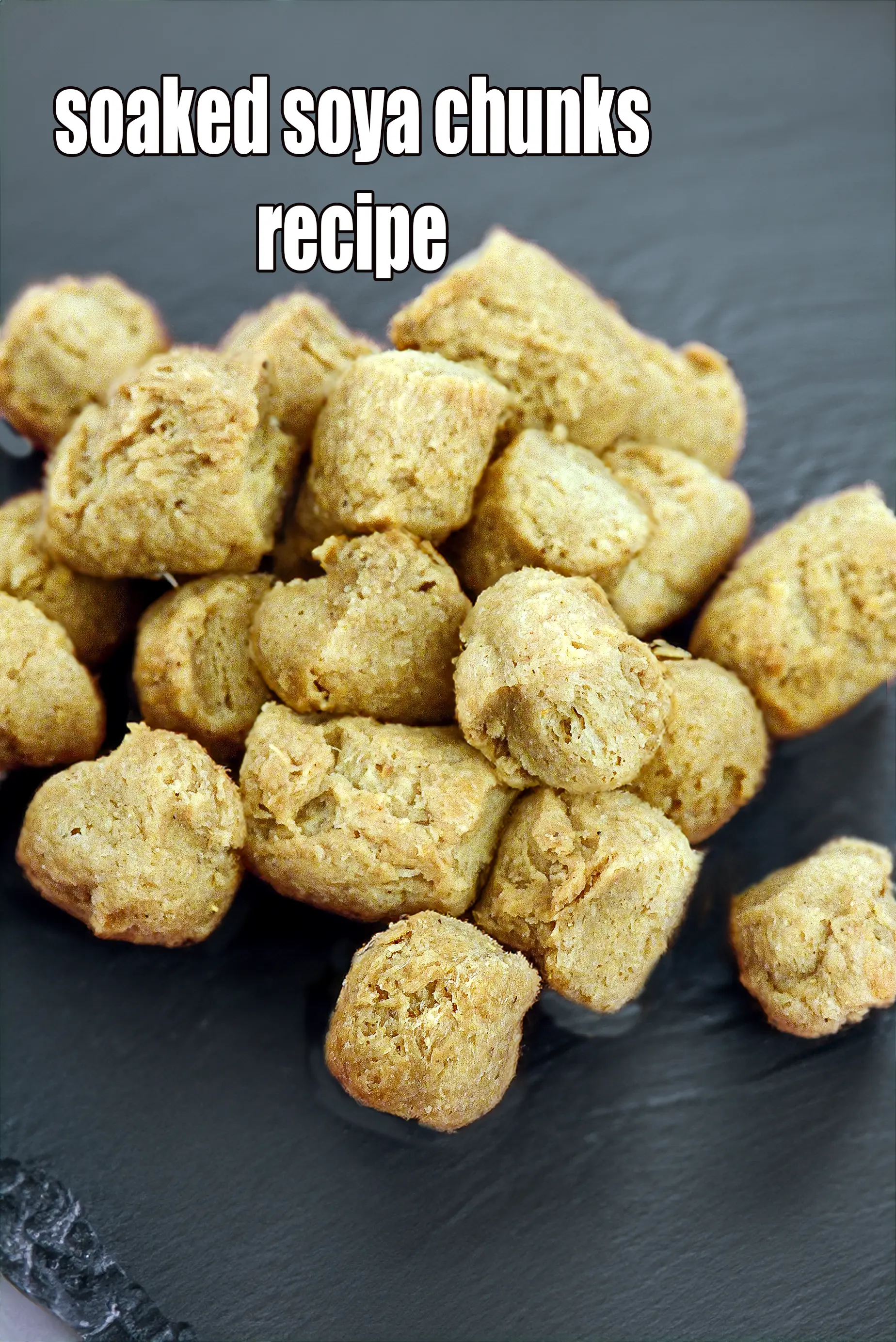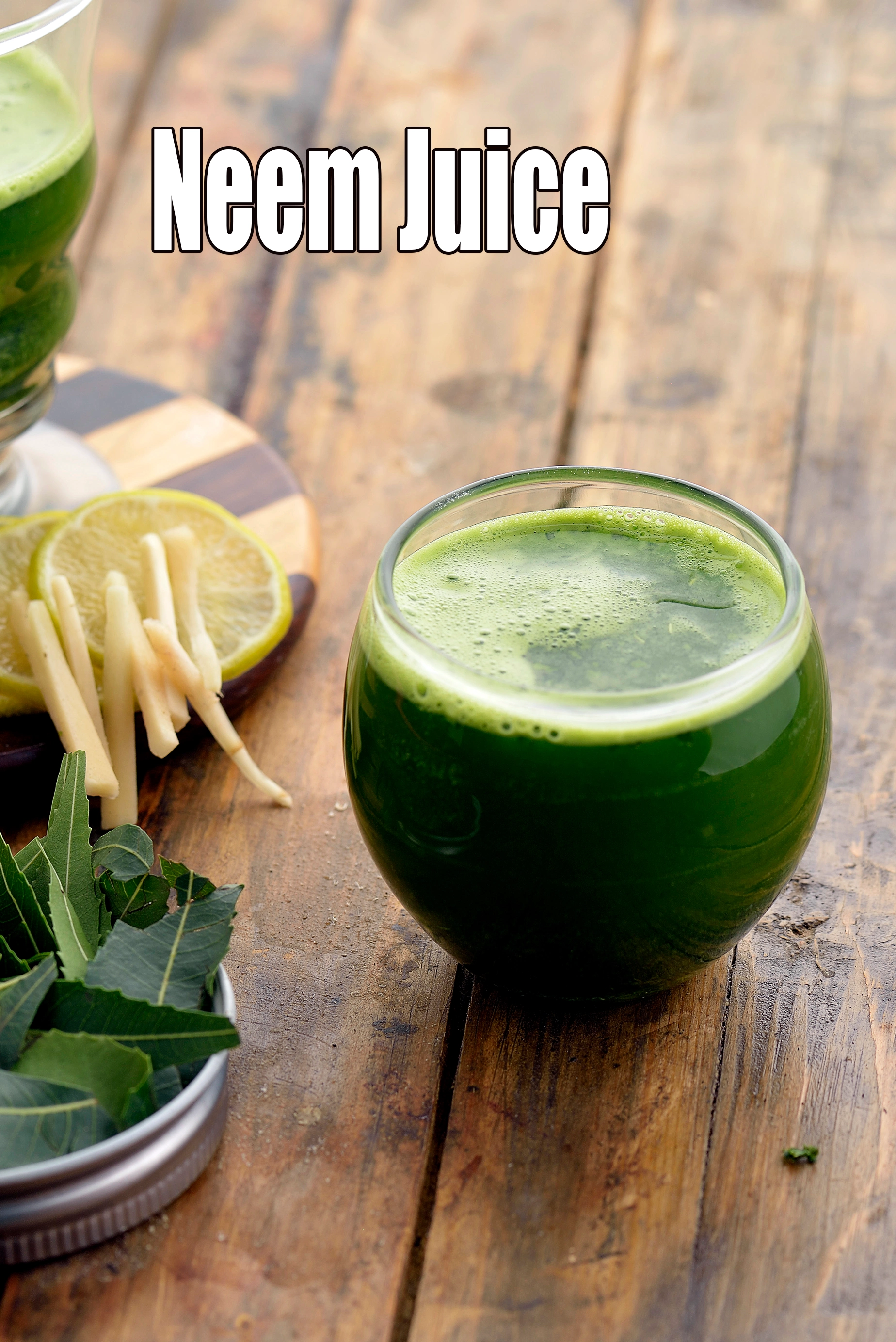Nutritional Facts of Oats and Moong Dal Dahi Vada, Calories in Oats and Moong Dal Dahi Vada
This calorie page has been viewed 6698 times
Healthy Indian Recipes
Healthy Indian Recipes
Healthy Indian Recipes
Table of Content
How many calories does one serving of Oats and Moong Dal Dahi Vada have?
One serving (3 vadas) of Oats and Moong Dal Dahi Vada gives 141 calories. Out of which carbohydrates comprise 92 calories, proteins account for 40 calories and remaining calories come from fat which is 9 calories. One serving of Oats and Moong Dal Dahi Vada provides about 7 percent of the total daily calorie requirement of a standard adult diet of 2,000 calories.
Oats and Moong Dal Dahi Vada recipe serves 5, with 3 vadas per serving.
141 calories for 1 serving of Oats and Moong Dal Dahi Vada, Cholesterol 0 mg, Carbohydrates 23.1g, Protein 9.8g, Fat 1g. Find how much fibre, iron, calcium, zinc, magnesium, phosphorus, sodium, potassium, folic acid is present in Oats and Moong Dal Dahi Vada.
See oats and moong dal dahi vada recipe | non fried oats moong dal dahi vada | healthy oats dahi vada | with 39 amazing images.
Learn how to make oats and moong dal dahi vada recipe | non fried oats moong dal dahi vada | healthy oats dahi vada |
Our Indian snacks, especially the savoury ones, have a knack of making one overeat, only to feel guilty later. Not if you make them the smart way, at home.
oats and moong dal dahi vada is one such brilliant snack – a non-fried version of dahi vadas, which can be enjoyed without any guilt! Fibre from the oats and calcium from curds makes this a nourishing yet low-fat treat.
Being so flavourful by itself, healthy oats dahi vadadoes not even require calorie-laden meetha chutney for serving.
Tips to make oats and moong dal dahi vada: 1. Do not soak the vadas for too long, else they might break. 2. Assemble the vadas just before serving then. 3. Baking powder makes the dahi vada soft and fluffy.
Is Oats and Moong Dal Dahi Vada healthy?
Yes.
Let's understand the Ingredients.
What's good.
Oats : Oats are a great source of protein for Vegetarians. It is rich in soluble fibre (to make it good for diabetics), which helps lower blood LDL cholesterol, the so-called "Bad" cholesterol. Whole Oats have an antioxidant called Avenanthramide (a polyphenol from oats) which helps lower blood pressure levels. Soluble fibre absorbs water and swells and to become gel like substance which helps in the absorption of nutrients like B Vitamins and minerals like Magnesium and Zinc which are key to a good heart. See here why oats are good for you?
Urad Dal : 1 cup of cooked urad dal gives 69.30% of your daily requirement of folic acid. The folic acid in urad dal helps your body to produce and maintain new cells, especially red blood cells. Being rich in Phosphorus it works with Calcium to build our bones. It is also high in fibre and good for heart, good for lowering cholesterol and good for diabetes. See here for 10 super benefits of urad dal.
Moong Dal ( Green Moong Dal ) : Moong dal or green moong dal is rich in Folate, Vitamin B9 or Folic Acid which helps your body to produce and maintain new cells, especially red blood cells and is pregnancy friendly. Being rich in Antioxidants like Flavonoids, mung reduces the damage done by free radicals to the blood vessels and lowers inflammation. Moong Dal is heart and diabetes friendly. Moong Dal or Split Green Gram are high in Fibre and 1 cup of cooked Moong dal gives 28.52% of your daily Fibre requirements. See here for 9 fabulous benefits of Moong Dal.
Curd + Low fat Curds, hung curds : Curds help in digestion as it has very good bacteria. Probiotics in curds acts as a mild laxative but, in case of diarrhoea and dysentery, it is a boon, if curd is used with rice. Curd is one of the richest sources of protein, calcium and minerals. They help in weight reduction, good for your heart and build immunity. Being low in sodium, it is safe to be eaten by individuals with high blood pressure. The only difference between curds and low fat curds is the fat level. Note that one cup curds gives half cup hung curds. Read the benefits of curds to include in your daily diet.
Can diabetics, heart patients and overweight individuals have Oats and Moong Dal Dahi Vada ?
Yes, this recipe is good for diabetics, heart and weight loss. Oats are a great source of protein for Vegetarians. It is rich in soluble fibre (to make it good for diabetics), which helps lower blood LDL cholesterol, the so-called "Bad" cholesterol. Whole Oats have an antioxidant called Avenanthramide (a polyphenol from oats) which helps lower blood pressure levels.
Can healthy individuals have Oats and Moong Dal Dahi Vada ?
Yes. Moong dal or green moong dal is rich in Folate, Vitamin B9 or Folic Acid which helps your body to produce and maintain new cells, especially red blood cells and is pregnancy friendly. Being rich in Antioxidants like Flavonoids, mung reduces the damage done by free radicals to the blood vessels and lowers inflammation.
Oats and Moong Dal Dahi Vada is rich in below macronutrients, vitamins and minerals given in descending order (highest to lowest).
- Phosphorus : Phosphorus rich Indian foods works closely with calcium to build bones. Phosphorus rich Indian foods like dairy products ( milk, paneer, curd), nuts, seeds, jowar, bajra, moong, matki, oats, ragi, wheat flour etc. 24% of RDA.
- Folic Acid (Vitamin B9): Folic acid is an essential vitamin required throughout pregnancy. Folic acid rich Indian foods (kabuli chana, chana dal, yellow moong dal, urad dal, tooval dal, til ). 22% of RDA.
- Vitamin B1 (Thiamine) : Vitamin B1 protects nerves, helps in carbohydrate metabolism, prevents heart diseases and helps produce red blood cells. Indian Foods rich in B1 are Flax seeds (alsi), Sunflower seeds, Sesame seeds, Garden cress seeds (halim), Capsicum, Wheat flour, Chana dal, moong, walnuts, masoor dal, brown rice, jowar, bajra. 20% of RDA.
- Calcium. See Calcium rich recipes : Calcium is a mineral that makes bones stay strong. See our list of calcium rich Indian foods. Dairy products: Like milk, curds, cheese, paneer and buttermilk. Green leafy vegetables like spinach, fenugreek, broccoli. Nuts and ragi. Required from kids to adults. 19% of RDA.
- Protein : Protein is required for managing the wear and tear of all cells of the body. Have protein rich Indian foods like paneer, curd, Greek yoghurt, tofu, almonds, sprouts, chana, rajma, chick peas, quinoa, buckwheat ). 18% of RDA.
| Energy | 141 cal |
| Protein | 9.8 g |
| Carbohydrates | 23.1 g |
| Fiber | 3.6 g |
| Fat | 1 g |
| Cholesterol | 0 mg |
| Vitamin A | 141.9 mcg |
| Vitamin B1 | 0.2 mg |
| Vitamin B2 | 0.1 mg |
| Vitamin B3 | 0.7 mg |
| Vitamin C | 0 mg |
| Folic Acid | 44 mcg |
| Calcium | 116.6 mg |
| Iron | 1.3 mg |
| Magnesium | 53 mg |
| Phosphorus | 146.5 mg |
| Sodium | 36.3 mg |
| Potassium | 302.5 mg |
| Zinc | 1 mg |

Click here to view Oats and Moong Dal Dahi Vada
Calories in other related recipes












